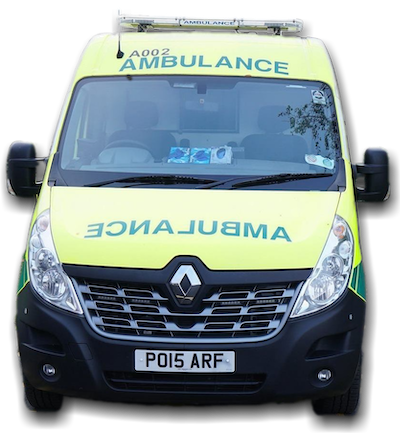Its all our fault, don't you know. The response to our letter to NWAS's Directors
This is the response to our letter to the Directors of NWAS. This is from the CEO at NWAS
ALSTON AMBULANCE SERVICE
Thank you for your email to myself, our Chair, Peter White and the Director of Strategy, Partnerships and Transformation, Salman Desai.
I can assure you that the trust is fully aware of the challenges of Alston’s rurality and access, and of the agreements made by the trust previously, however, it is important to recognise that health care is a continually evolving sector and we are governed by rules and requirements that can change over time.
The decision to disband the EMT team is not one we took lightly and has come about because of a change in the required qualifications and certification. It is strongly advised by the Association of Ambulance Chief Executive’s (AACE) that EMTs should not operate without the Associate Ambulance Practitioner (AAP) certificate and to do so would be putting the organisations who dispatch them, the individuals and patients at risk. This is not a new implementation by NWAS but a nationwide requirement which we, and all our fellow ambulance trusts are complying with. Unfortunately, there are no exceptions.
My understanding is that when the EMT group was established, training for the then optional AAP certificate was offered, but due to personal commitments, the EMTs were unable to take this up. At the time, this was not a huge barrier, and despite the lack of official certification, we were happy to support the group. Now all EMTs at NWAS are trained in accordance with the learning outcomes of the regulated AAP and we can’t permit a small number, operating on our behalf and paid by the trust, to continue to do so without the qualification.
As we are no longer able to support the group as EMTs, the consequence is that we also cannot continue to ‘ring-fence’ a major resource in the equipped emergency ambulance. The Alston ambulance is only currently used to travel to an incident. The EMT team do not have blue light training and so are unable to convey patients to hospital – our records show that a patient has not been transported in this ambulance since 2018. This means that they are reaching a patient no quicker than if they were travelling in their own transport as the majority of our CFRs do.
We know the area is challenging in terms of accessibility, which is why we have explored a range of options, taking into the account the suggestions from the community, and are working to put in place a safer and more sustainable service.
This will include recruitment of additional community first responders with enhanced skills and a wider clinical scope, who can provide safe and effective treatment to patients while an ambulance is en route. We are working with the local clinical commissioning group (CCG) and local nurses to achieve this, with the co-operation of the current CFRs and those who have expressed an interest in taking on the role.
The enhanced CFR model that we are proposing, is a model that NWAS will be taking to the national CFR network to be demonstrated as best practice for CFRs in the future. This is due to the scoping work completed in collaboration with Alston Moor representatives. The Association of Ambulance Chief Executives is looking to standardise and improve the care and treatment provided by CFRs and the Alston model is to be used as an example of good practice, particularly for rural areas. The result of this standardisation will mean the country’s ambulance sector CFR network will have the potential to greater impact on the care and intervention provided to people prior to the arrival of an emergency ambulance.
The challenge of meeting performance standards is one we face in all areas of the North West, even in inner city areas, but you are correct in that it is particularly challenging in rural areas. This is why we cannot justify maintaining an ambulance in Alston which is infrequently used.
I appreciate that you are disappointed at the outcome and I can assure you that we have not made this decision to then walk away and leave village to their own devices. We want to work with the community and our NHS colleagues to design and implement an alternative, which, based on the data we have, will be sufficient for the community’s needs.
The trust’s Director of Operations, Cumbria and Lancashire’s Head of Service and the Chair of the National Ambulance Service Responder Manager Group (NASRMG) will be attending a meeting in Alston on 2 August to discuss the proposed model and respond to any concerns or questions the community have. They are fully committed to supporting Alston and ensuring a practical and efficient service model is in place.
Yours sincerely GED BLEZARD Executive Director of Operations
We are responding with the following points: 1) it is the Ambulance Services obligation and statutory duty to provide a ambulance service, not ours as a community to deserve it, or resource it. (Altho we actually have resourced it with people and money)
2) The EMT's have NEVER been offered additional training nor have they EVER refused training that was offered them
3) We have asked and asked and asked for blue light training for the crews. We have asked and asked for the crews to be able to move patients to hospital. These requests have always been refused.
4) The ambulance was not paid for by NWAS but was paid for by CCG


